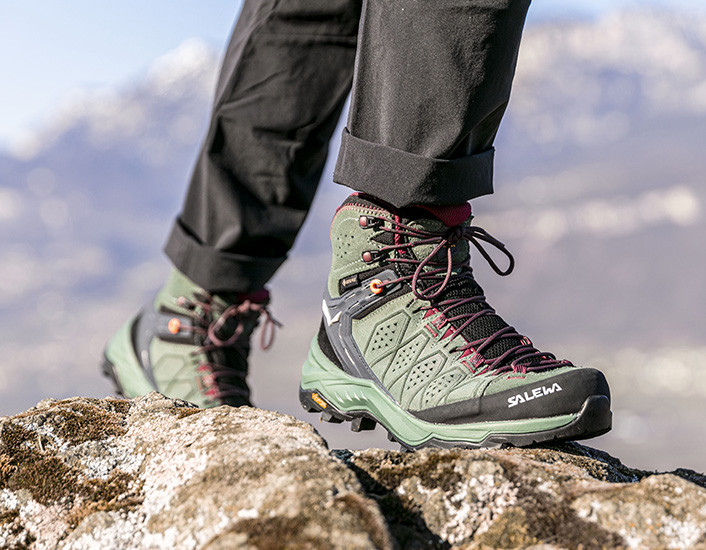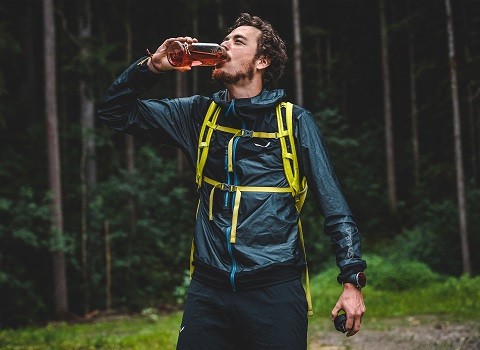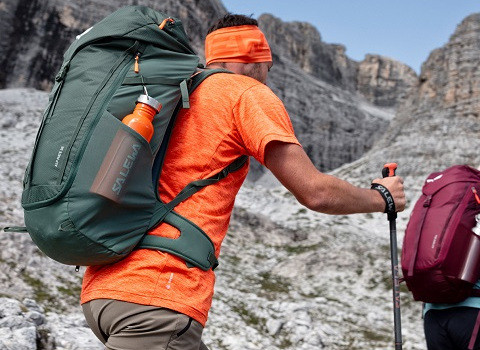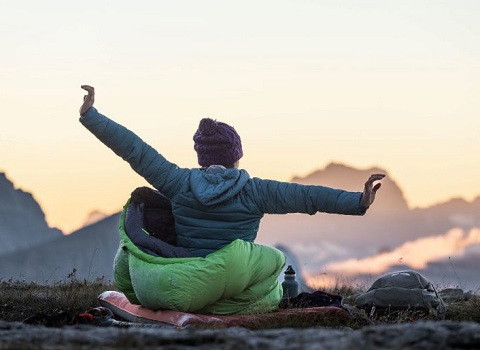expert advice / alpine trekking
WHY IS A HIKING FIRST AID KIT IMPORTANT?
When you’re taking part in any outdoor activity that takes you away from built-up areas, it’s important to always have some form of medical or first aid supplies with you so that you can cope if there is an accident or emergency – either involving yourself or someone else. However careful you are, accidents will happen, and rescue services are not always nearby to help out. Whether it’s for simple cuts and grazes, blisters or insect bites, a first aid kit is a must in any trekking or hiking backpack.
1. First aid kit for hikers: What to bring?
Before heading out on a hike or trek, whether it’s just for the day or spanning several days, you should inspect your first aid kit to make sure it has everything you need for the journey ahead, and nothing more. A good guideline here would be to ask yourself these three questions:
- Do I need it?
- What might happen if I don’t take it?
- What’s missing?
You can buy ready-made first aid kits. Some are even specifically geared toward hiking. Or you might decide to assemble your own DIY hiking first aid kit. Consider your own specific needs, as this will help with making your decision. You can even decide to buy a kit and then add items that are specific to you. For instance, you might need an epi-pen for allergies.
1.2. Hiking first aid kit essentials
Below, we’ve compiled a few lists of hiking first aid kit essentials that could be included in a hiking first aid kit list.
Basic trekking first aid kit list
- Antiseptic or alcohol wipes
- Butterfly closure strips
- Antibacterial cream
- Safety pins (to make a sling from clothing items)
- Tweezers
- Scissors or multi-tool
- Paracetamol / ibuprofen
- Antihistamine for allergic reactions
- Burn gel
- Assorted bandages
- Gauze pads in various sizes
- Non-adhesive dressings in various sizes
- Medical tape
- Blister plasters
- Emergency services contact number for the area
- Any personal medication
If going on an extended trek or multi-day hike, you will likely be in more remote areas and should consider carrying a more comprehensive multi-day trekking first aid kit. Here is an example of what this might include.
1. First aid kit for hikers: What to bring?
1.2. Hiking first aid kit essentials
2. Do first aid kits have medicine?
3. Is it cheaper to buy or build a first aid kit?
2. Comprehensive first aid kit for multi-day trekking and long-distance hiking
- Surgical gloves
- Antiseptic or alcohol wipes
- Antibacterial cream
- Safety pins (to make a sling from clothing items)
- Tweezers
- Scissors or multi-tool
- Paracetamol / ibuprofen
- Any personal medication
- Anti-diarrhoea pills
- Rehydration salts
- Prescription medication such as broad-spectrum antibiotics
- Antihistamine for allergic reactions
- Burn gel
- Blister plasters
- Butterfly closure strips
- Assorted bandages
- Gauze pads in various sizes
- Non-adhesive dressings in various sizes
- Medical tape
- Triangular bandage
- Finger splint
- SAM splint
- Roll of gauze
- Cleansing pads with anaesthetic
- Blood-stopping gauze pads
- Liquid bandage
- Eye drops
- Thermometer
- Irrigation syringe
- Small mirror
- Sewing needle
- CPR mask
- Whistle
- Heat-reflecting blanket/ space blanket/ group shelter
- Emergency services contact number for the area
Other items:
- Duct tape to fix tents and clothing
- Spare laces
Do first aid kits have medicine?
First aid kits don’t normally contain medications such as paracetamol, Ibuprofen, decongestants, sinus relief, etc. as these are not first aid items. If you require prescription or over-the-counter medications on your hiking trip, make sure you bring them with you.
RELATED PRODUCTS
Related Topics
PLANNING YOUR FOOD FOR HIKING MOUNTAINS
Food is your fuel for any high-output activity, and mountaineering is certainly the kind of activity where what you eat will have a direct effect on your performance and endurance.
HOW TO PACK AND ORGANIZE A HIKING BACKPACK
A well-packed backpack can make all the difference to enjoying your time in the mountains – whether day trip, hut-to-hut adventure or a week trekking in the backcountry with a sleeping bag and tent.
HOW TO CHOOSE A SLEEPING BAG
Having a cosy night’s sleep can make a huge difference to the enjoyment of any night out camping or bivvying, so it’s important to spend some time carefully considering what sleeping bag is the right choice for the activities you’ll be undertaking and the environment you’ll be in.
3. Is it cheaper to buy or build a first aid kit?
Most people buy ready-made first-aid kits to save time compared to buying individual supplies and assembling a kit. However, ready-made first-aid kits can be more expensive. They also come with items that you might not need, which adds bulk and unnecessary weight. The cheapest solution is probably the one that meets your needs with the least amount of extra waste.
Why not pack a water-resistant bag or pouch with the supplies for your DIY hiking first aid kit? By building your own, you ensure that you have exactly what you need and nothing more.
4. How to prevent the most common injuries?
We’ve talked about what should be in a first aid kit for hiking or trekking. However, one of the most important first aid tips we know is to be proactive and prevent injuries from happening in the first place.
- Carry enough water depending on the length of the hike and the temperature. Water is heavy, so take this into consideration before heading out. Will there be fresh springs or places to replenish your water supplies?
- Pack the right food. And enough of it. Food is your fuel. Bring salty snacks as your body needs energy to keep moving and salt to balance your electrolyte levels.
- Protect yourself from the sun, using sunscreen and appropriate headgear and clothing.
- Wear functional clothing that wicks away moisture and is layerable so you can adjust quickly based on how you feel.
- Have enough layers whenever you head out into the mountains, so that you can deal with whatever the weather might throw at you.
- Get good footwear. But don’t try out new shoes on a hike. Break them in first!
4.1. Additional mountain safety tips:
- Always tell someone your planned route and estimated time of return.
- Know how to contact the local mountain rescue service before setting out.
- Wear suitable clothing and footwear.
- GPS apps or navigation apps can help pinpoint your exact location.
- Pack the right safety equipment.
- Have a space blanket and group shelter to keep everyone warm if you need to wait to be rescued.

 Free shipping on orders over $200 - No minimum for registered users
Free shipping on orders over $200 - No minimum for registered users


